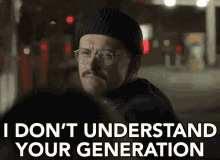In the span of two decades, the average person's clothing consumption has surged by 60%, with a staggering 97% of garments being manufactured overseas. Astonishingly, a pair of jeans requires a whopping 3781 liters of water to produce, while the fashion industry itself contributes to 10% of global carbon emissions.
These eye-opening facts, however, have not been sufficient to jolt the world into recognizing the inherently toxic nature of the fashion industry. As the demand for trendy clothing accelerates, propelled by the rise of "fast fashion," it is crucial to question the deeper implications of this trillion-dollar business.
Let us slide into your dms 🥰
Get notified of top trending articles like this one every week! (we won't spam you)What Exactly is Fast Fashion?
This term encapsulates the rapid and inexpensive production of clothing, catering to consumers who crave constant novelty and contribute to the relentless manufacturing cycle. Once defined by four seasonal collections per year, the fashion industry now churns out new styles every week, pressuring individuals to keep up with the latest trends or risk being deemed unfashionable. Retailers capitalize on low-cost labor and target young shoppers susceptible to the allure of advertising.

Take the Quiz: Which Generation Matches Your Personality?
Discover the generation you truly belong to!
A Brief History
The roots of fast fashion can be traced back to the late 19th century when urbanization spurred the transformation of markets into stores, paving the way for industrialized garment production.
The 20th century witnessed the expansion of mass production, coinciding with the emergence of popular fashion brands like H&M and River Island, focused on providing stylish and affordable clothing to the masses.
In the early 1990s, Zara, a prominent fashion retailer, opened its first branch in New York. The company's rapid two-week process encompassing design, manufacturing, delivery, and sales prompted the coining of the term "fast fashion" by The New York Times. This approach swiftly gained traction, as other brands sought to emulate the high-end aesthetic at a fraction of the cost by employing cheaper materials.
The Hidden Costs
While fast fashion offers lower prices, it comes at the expense of quality and durability. Consumers have been conditioned to overlook subpar craftsmanship in favor of the promise of more clothes. As long as garments arrive quickly and cheaply, a loose button or frayed thread is often dismissed.
However, beyond consumer exploitation, there are even more pressing concerns that demand attention.
Environmental Impact:
The environmental impact of fast fashion is staggering. Annual textile production emissions surpass those from all international flights and shipping combined, accounting for a colossal 1.2 billion tons of CO2. This figure is equivalent to almost the entire carbon emissions of Europe and is projected to consume over a quarter of the global carbon budget. Furthermore, textile production necessitates an astronomical amount of water, with a global footprint of 80 billion cubic meters. The dyeing of textiles alone contributes to 20% of global industrial water pollution, while the catastrophic water consumption has led to the complete desiccation of the Aral Sea in Central Asia.
Exploitative Labour:
Exploitative labor practices are also deeply intertwined with fast fashion. With 80% of the industry's workforce comprised of women, it capitalizes on patriarchal societies in developing countries. Countries like Bangladesh, where women face systemic inequalities, become fertile ground for large factories to exploit their labor. Insufficient wages and grueling working conditions prevail, with sewing operators in Bangladesh earning a meagre $42 per month for arduous 13-hour workdays. The Covid-19 pandemic further exacerbated the plight of garment workers, leaving them without pay for months and pushing many into unemployment and dire poverty.
Many factories closed in response to the Covid-19 pandemic, leaving employees without pay for months and no way to feed their families or pay rent. Employers failed to notify workers they had lost their job when the factories reopened, causing unemployment to surge during the summer of 2020.
Health Hazards:
Apart from the abysmal financial incentives, the treatment of workers in these factories is appalling. Female employees face severe difficulties in speaking out about workplace abuse, with an estimated 50% of Vietnamese factory workers experiencing some form of violence or maltreatment. The actual rate is likely much higher, as women fear the consequences of their complaints being discovered by their employers.
A blind eye is being turned to the negligence of billion-dollar companies that prioritize production rates over employee wellbeing.
The collapse of the Rana Plaza building in Dhaka, Bangladesh in 2013 stands as a stark reminder of the dangers faced by garment workers. The tragedy claimed the lives of 1,134 individuals, with thousands more suffering injuries. While the media covered the harrowing tales of survival, the subsequent actions taken were insufficient. Even today, nearly 7 years later, many remain unaware of this incident and the ongoing hazards faced by workers in the fashion industry.
Just one day before the accident, lower-floor shops were closed due to identified structural cracks, acknowledging the imminent danger. However, the upper-floor owners of the garment factory failed to warn employees who were called in for work the following day. As a result, many workers were trapped under the rubble and machinery, enduring hours of suffering while awaiting rescue.
Such events are not isolated incidents. In December 2019, a fire at an illegal sweatshop factory in Delhi, India claimed the lives of 43 people. The building operated without a fire license, yet these episodes of tragedy and exploitation have been consistently overlooked, perpetuating the negligence of fashion companies.
Change in the Face of Adversity
- Consumer Responsibility
In response, young people have matters into their own hands by embracing sustainable alternatives to fast fashion. One such alternative is purchasing second-hand clothing from thrift stores or online platforms like Depop. Depop has emerged as a popular online fashion marketplace, catering to shoppers of all ages, where new and used clothing can be bought and sold at more affordable prices compared to traditional retail stores.
The resurgence of interest in vintage clothing has played a significant role in this shift towards second-hand fashion. Many individuals are now opting for pre-owned garments, recognizing the environmental benefits of giving these items a second life.
Alongside this, another sustainable trend gaining traction is the practice of "upcycling" or refashioning discarded textiles into new, innovative pieces. By repurposing existing materials, individuals can save money while also reducing waste and conserving valuable resources.
Garment Schemes
The alarming revelations about the fast fashion industry have spurred brands to take responsibility for their environmental and social impact. As a result, several garment recovery initiatives have emerged, aiming to encourage recycling and reduce textile waste. Many brands, including H&M, Zara, MAC, and Adidas, have implemented recycling programs, providing recycling baskets in their stores. H&M, for instance, introduced its own scheme in 2013, incentivizing customers with financial rewards for every bag of clothes donated. These efforts reflect an attempt by fast fashion brands to address the concerns raised by critics.
Sustainable Fashion
In contrast, there are brands that have chosen a different path, dedicating themselves entirely to sustainable fashion practices. Sustainable fashion goes beyond just creating durable and long-lasting products; it encompasses considerations of the entire product lifecycle, from production to its environmental impact and adherence to human rights requirements.
Companies like Reformation and Veja prioritize reducing water and chemical consumption while ensuring their products are manufactured under fair labor conditions, meeting national human rights standards. Although sustainable fashion is sometimes criticized for its relatively higher cost, consumers are not only paying for higher quality but also contributing to environmental preservation.
Levi's, a renowned denim brand, launched the 'Water<Less' campaign in 2011, aiming to create jeans of the same quality while reducing water usage. Through their website, Levi's educates consumers about the campaign and provides information on how they can support the cause, including tips on washing denim sustainably.
Human Rights Campaigns
Numerous human rights campaigns have also emerged to support vulnerable workers in the fast fashion industry worldwide. One notable initiative is the Clean Clothes Campaign, a global movement focused on improving working conditions for the 40 million garment workers worldwide. The campaign aims to educate consumers, collaborate with trade unions and NGOs, and address critical issues such as poverty and women's rights.
The Clean Clothes Campaign website encourages people to take action by raising awareness and urging brands to listen to the urgent concerns of the cause. Visitors can participate by calling on brands to take the Transparency Pledge, which commits companies to disclose relevant information about all factories involved in the manufacturing phase, ensuring transparency throughout the supply chain.
As the movement for sustainable and ethical fashion gains momentum, it is crucial for consumers, brands, and policymakers to collaborate and drive systemic change, ensuring a future where fashion is not only stylish but also responsible and respectful towards people and the planet.


















